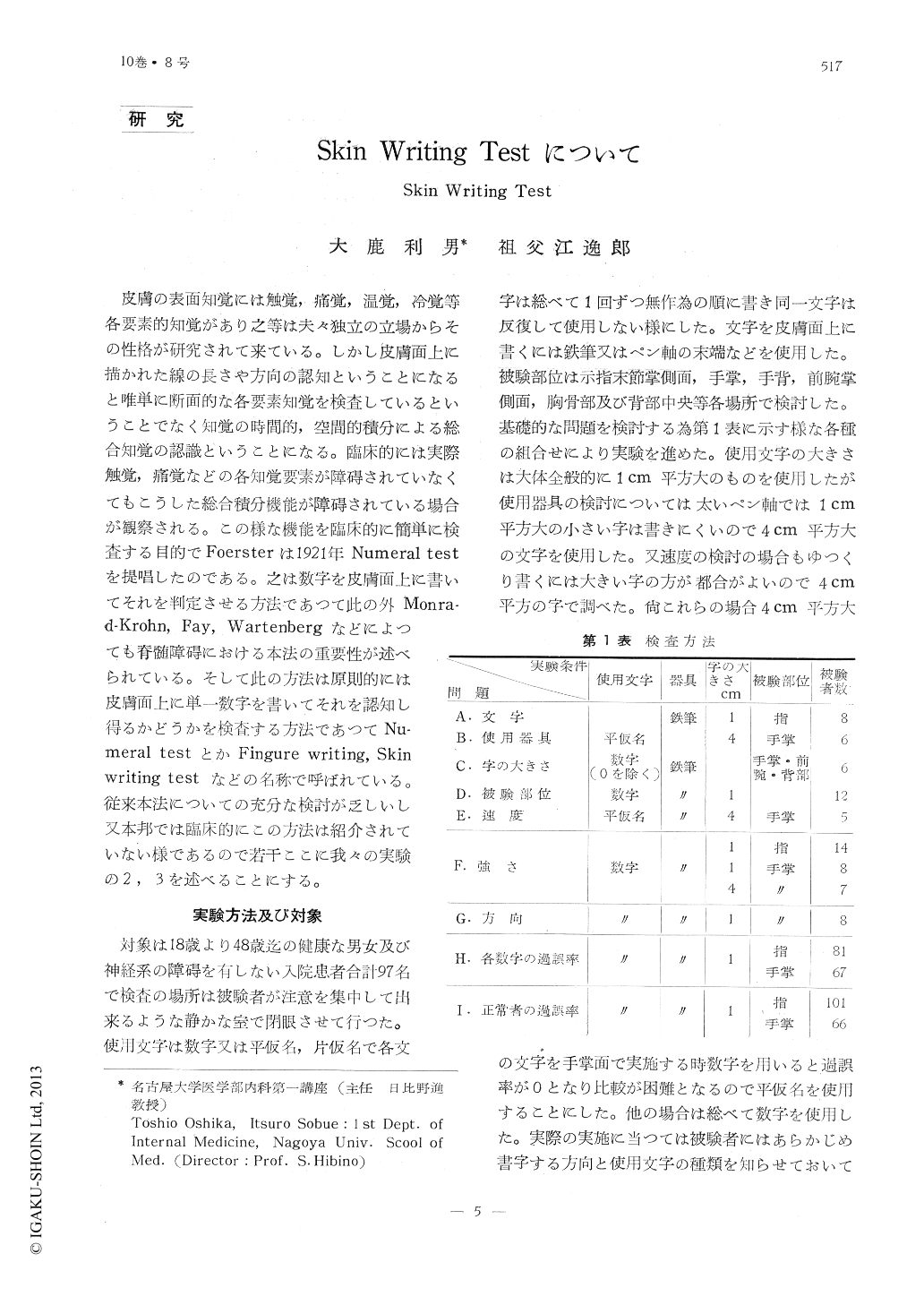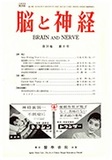Japanese
English
- 有料閲覧
- Abstract 文献概要
- 1ページ目 Look Inside
皮膚の表面知覚には触覚,痛覚,温覚,冷覚等各要素的知覚があり之等は夫々独立の立場からその性格が研究されて来ている。しかし皮膚面上に描かれた線の長さや方向の認知ということになると唯単に断面的な各要素知覚を検査しているということでなく知覚の時間的,空間的積分による総合知覚の認識ということになる。臨床的には実際触覚,痛覚などの各知覚要素が障碍されていなくてもこうした総合積分機能が障碍されている場合が観察される。この様な機能を臨床的に簡単に検査する目的でFoersterは1921年Numeral testを提唱したのである。之は数字を皮膚面上に書いてそれを判定させる方法であつて此の外Monra-d-Krohn, Fay, Wartenbergなどによつても脊髄障碍における本法の重要性が述べられている。そして此の方法は原則的には皮膚面上に単一数字を書いてそれを認知し得るかどうかを検査する方法であつてNu-meral testとかFingure writing, Skinwriting testなどの名称で呼ばれている。従来本法についての充分な検討が乏しいし又本邦では臨床的にこの方法は紹介されていない様であるので若干ここに我々の実験の2,3を述べることにする。
Skin writing test is one of methods in cli-nical sensory examination. It is seemed that higher integrating function of many cutaneo-us senses could be examined by this method. For this purpose, the method of writing se-veral simple numerals on the skin has been adopted.
In this paper many basic studies of this method are reported. Japanese alphabet is not suitable for using it in this method, as it has so complex characters. Letters of 4cm in diameter written on the skin with a penho-lder were easier to recognize than those wri-tten with a steel pen. Large letters were easier recognized than small ones. The rate of errors on different parts of the body was higher in the following order: back, back of the hand, forearm, breast, palm and finger. This result seems to show a close correlation with two-point threshold, or tactile localization on those parts. The most adequate speed of writing a numeral on the skin is three seco-nds, as it will be more difficult to recognize in using more slow or rapid speed than three seconds. Letters should he written in a ce-rtain intensity to have a good result. The direction of writing letters has no relation to the rate of errors.

Copyright © 1958, Igaku-Shoin Ltd. All rights reserved.


